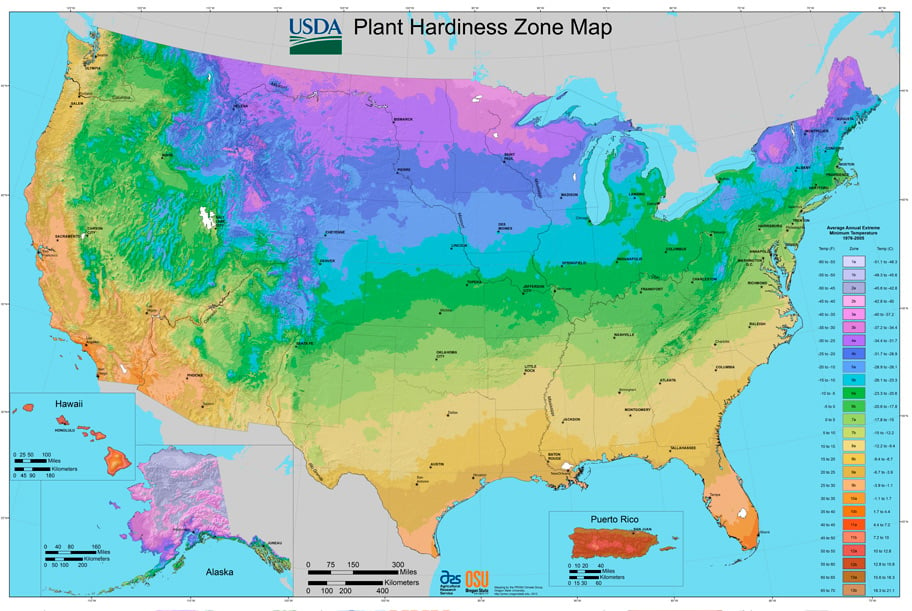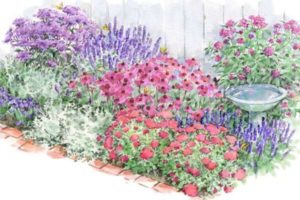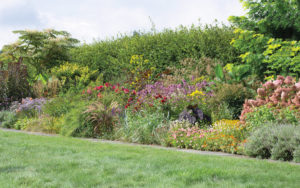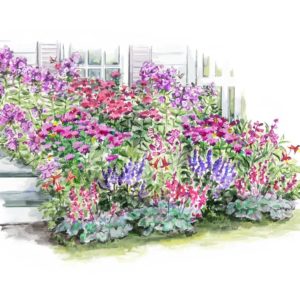
If you’ve spent any time shopping for plants, you’ve likely encountered the term “hardiness zone.” Simply put, hardiness zones are numerical and alphabetical codes that are assigned by the U.S. Department of Agriculture to each area of the country. Our hardiness zone at the farm is 5b. Other areas of Connecticut may have slightly different zones, ranging up to 7a depending on regional geographic and climactic factors. Why is it important for gardeners to know their hardiness zones? Knowing your zone is the key to choosing plants that can survive and thrive in your particular area. Choosing plants that are not hardy in your zone can lead to frustration, disappointment and unnecessary expense.
To help demystify ‘hardiness zones,’ and to help you understand how to choose plants that are hardy for your garden, read below.
What Is a Hardiness Zone?
Using historical temperature data, the U.S. Department of Agriculture (USDA) divided the country into 13 hardiness zones, ranging from 1 (coldest) to 13 (warmest). Each of these zones is further divided into “A” and “B” for greater accuracy, with A being colder than B. Click here to see the USDA’s hardiness zone map. These zones are defined by average annual minimum temperatures. For example, a zip code in which the average annual minimum temperature is between -15 and -10 Fahrenheit is assigned to hardiness zone 5B.
The idea behind the map is that a gardener may look up his or her hardiness zone and use it to identify plants that will thrive in their area. For example, a gardener in our region of Northwest Connecticut (hardiness zone 5b) may confidently plant a variety that has been rated hardy to zone 4 but would generally not plant a variety that is rated hardy only to zone 6, because the zone 6 plant is not likely to survive the typical winter in that area.
How To Find & Use Your Hardiness Zone on WhiteFlowerFarm.com
It’s easy to find your zone on our website, www.WhiteFlowerFarm.com, and our site is set up to help you shop with your zone in mind. First, at the top of our home page, just under the Search box, click on Find Your Hardiness Zone and enter your zip code in the box that appears, then click Look Up. When the page reappears, your zone number will be listed at the top of the page in the spot previously occupied by Find Your Hardiness Zone. As you shop for individual plants and collections, the site will keep track of your zone, so that just beneath each product name, the words “Within My Zone” will appear alongside a small green flag if the plant you’ve chosen is, indeed, hardy in your area. If a plant is not hardy in your area, a small red flag with the words “Outside My Zone” will display.
As you navigate our site, you may also use the filters on the left side of the page to narrow down a listing to display only plants that will thrive in your zone.
Some experienced gardeners may “push the zone” by taking a chance on a plant that is not hardy in their area. Some plants can, in fact, be pushed, but they may require coddling and special care to see them through winter. Please be aware that we cannot honor our usual guarantee on plants if they have been shipped and planted outside of their suggested hardiness range.
Sometimes Hardiness Ratings Include “S” or “W” – What Does This Mean?
When listing the hardiness range of a plant, we often “split” the warm end of the range—for example, you might see a plant listed as Hardiness Zone: 3-8S/10W. In this instance, the 3 refers to the “cold hardiness” of the plant—all else equal, this variety should overwinter successfully in zone 3. The 8S refers to the humid Southeast (the ‘S’ being for ‘South’) and the 10W (‘W’ for ‘West’) to the comparatively dry Pacific Coast states of CA, OR, and WA—this plant can tolerate zone 8 temperatures in the South, and zone 10 temperatures on the West coast. In Northern climates, summer heat is not typically a consideration.
So to summarize—a plant listed as 3-8S/10W should successfully overwinter in zones 3 or warmer, tolerate humid heat up to zone 8, and tolerate dry heat up to zone 10.
We realize this is a bit complicated, but the problem is that the USDA zones are not always sufficiently specific. For example, our nursery in Connecticut is in the same hardiness zone as Taos, New Mexico, a climate that could hardly be more different than ours. Furthermore, there are innumerable other variables that may determine how a plant fares in a given site. We find that customers, over time, gain a good understanding of which plants do and don’t work for them, and this understanding is much more helpful than a strict reliance on hardiness zones. When in doubt, please contact us—our customer service team is extremely knowledgeable and ready to assist. You’ll find them at [email protected] or by calling 1-800-503-9624.



